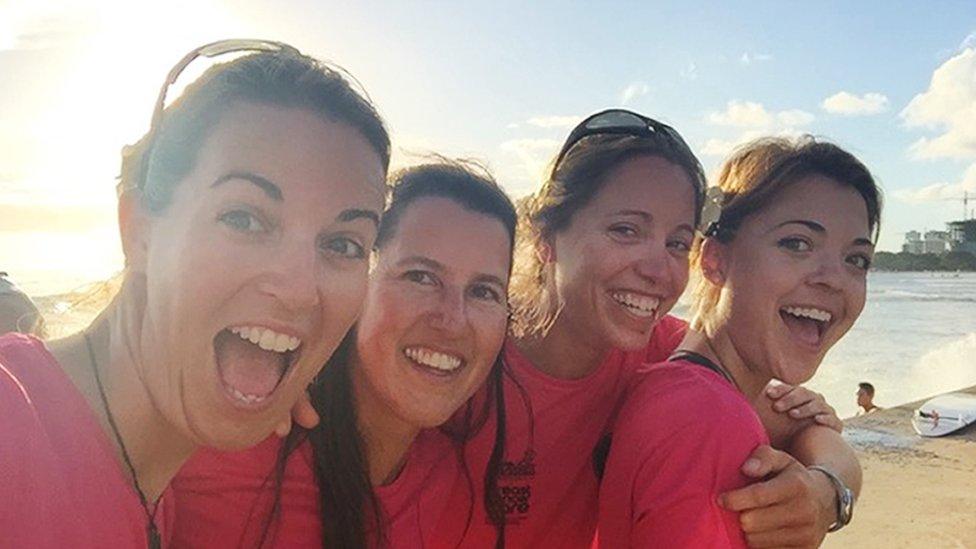Coxless Crew: Behind the scenes of a Pacific challenge
- Published
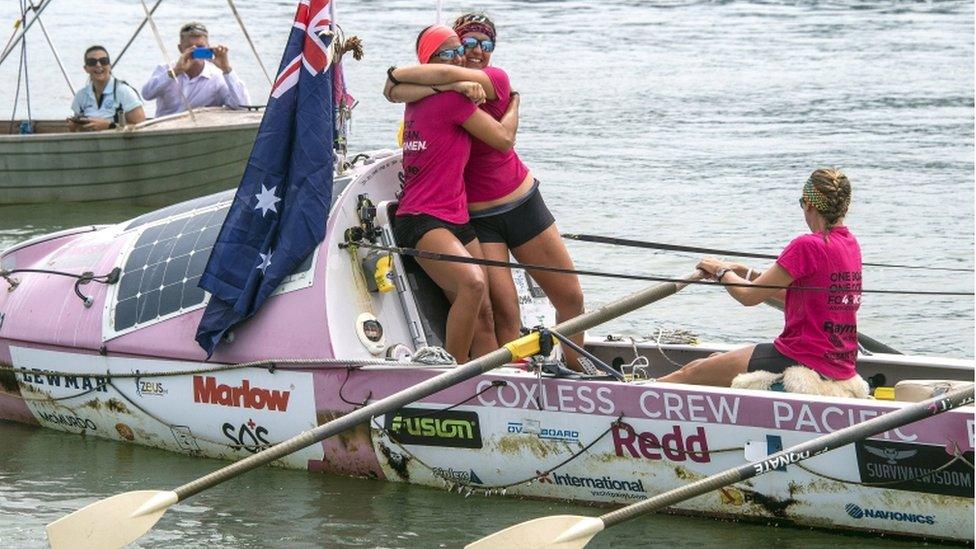
A crew of rowers has finished a journey across the Pacific - becoming the first all-female and first four-person team to do so. From cramped sleeping conditions to pods of dolphins, BBC News looks behind the scenes of a Pacific challenge.
The crew was made up of three permanent members - Laura Penhaul, Natalia Cohen and Emma Mitchell - along with Isabel Burnham, Lizanne van Vuuren and Meg Dyos - who each joined them for a leg of the trip.

Doris the pink boat

The 29ft (8.84m) long and 7ft (2.13m) wide 1.5-tonne boat the women lived on was called Doris. The set up was similar to a sculling boat, with each rower having two oars and a sliding seat. Under the deck there was storage space accessed through hatches on deck where food, ropes, tools and spare parts were stored.
The name Doris derives from the ancient Greek, which means "Dorian woman" - the Dorians occupied the Peloponnese starting in the 12th Century BC, and in Greek mythology Doris was a sea nymph, one of the many children of Oceanus and Tethys.

Eating
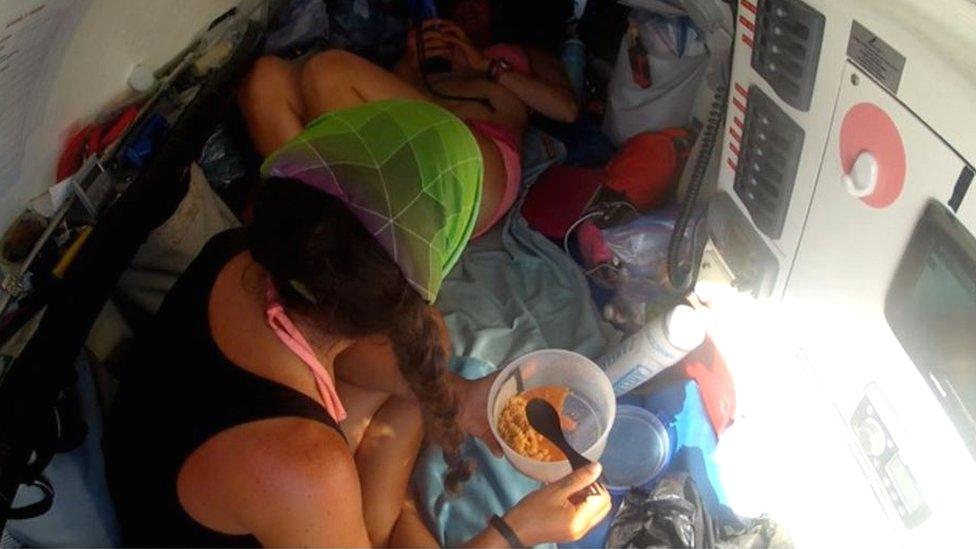
The crew each tried to consume 5,000 calories a day and ate dehydrated meals of chicken noodles, curries and spaghetti bolognese, supplemented by protein bars, chocolate, nuts and porridge. On 25 December they also had a Christmas cake and on one occasion cooked pancakes on the deck using the rays of the sun.
Protein shakes and desalinated seawater made up the fluid intake.
The only kitchen equipment the rowers had were sporks (combination spoon and fork), Tupperware boxes and a facility for making hot water to add to dried meals.
Lizanne Van Vuuren said she was given some good advice about eating rations: "Just tell your brain you like it, and you'll like it". Apparently it works.
A typical 5,000-calorie daily menu:
09:30: Fruit muesli (800cal) mixed with protein shake (600cal).
11:30: Two granola bars (190cal each)
13:30: Chicken tikka massala (800cal) followed by chocolate pudding (500cal)
15:30: Handful of sweets (250cal total)
17:30: Noodles (300cal) with packet of tuna (200cal) followed by a Mars bar (240cal)
19:30: Twix bar (200cal)
23:30: Biscuits (160cal)
The oarswomen all lost weight. Ms Penhaul said: "The fact that I can see my shin bones and ribs is pretty much a sure sign of weight loss. I may have always been someone of a slim frame, but I'm not a fan of skinny, I much prefer strong over skinny, so seeing so much muscle waste away is slightly distressing."

Sleeping - and not sleeping
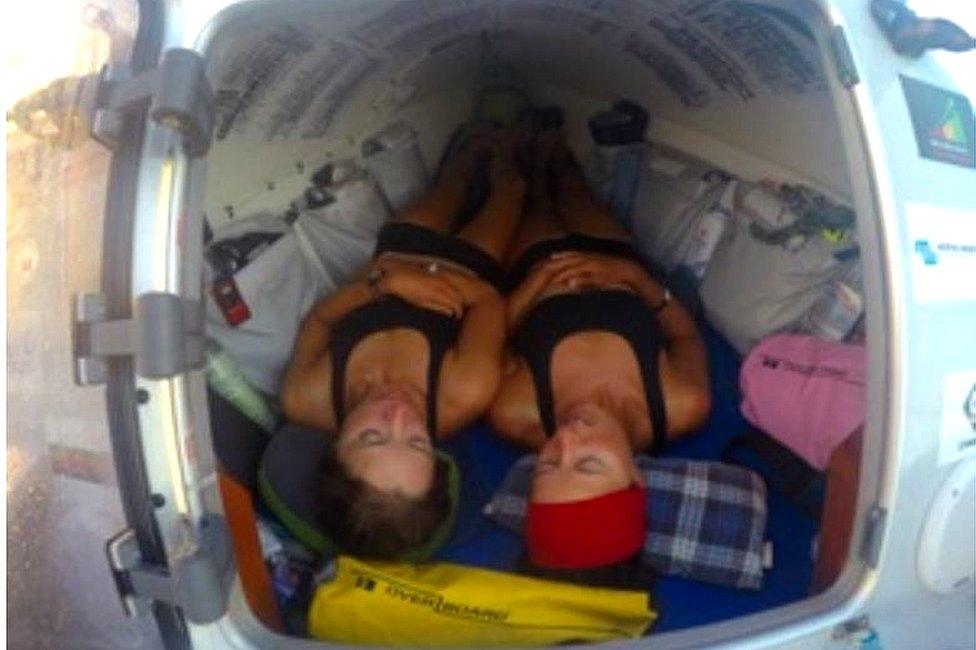
The aft cabin, the size of a two-person tent, was used as the crew's kitchen, living room, bedroom, dining room and office.
It was too low to stand up in, so changing clothes would be done lying down and teeth-cleaning was done over the side of the boat.
Sleeping involved two people "top and tailing" and took place in 90-minute sessions.
The women rowed through the night in two-hour shifts.
They chose to do this for both physical and psychological reasons. During a normal eight-hour sleep, humans go through a number of sleep cycles. The crew of the Doris aimed to have just one sleep cycle before waking up.
Any longer than 90 minutes would have pushed them into another sleep cycle and it would have been more difficult to wake up.

Weather

The crew endured gales, storms, waves as high as three-storey buildings and temperatures up to 40C (104F) and as low as 12C (53.6F).
The route was chosen to take advantage of the prevailing winds and currents as much as possible, although winds were less favourable than anticipated, leading to a longer time at sea than originally planned.
The women had specialist kit - but also came up with their own ways of dealing with the conditions, such as wearing baseball caps sideways to protect their faces from the sun, and draping themselves with outsized T-shirts.

Other sea life
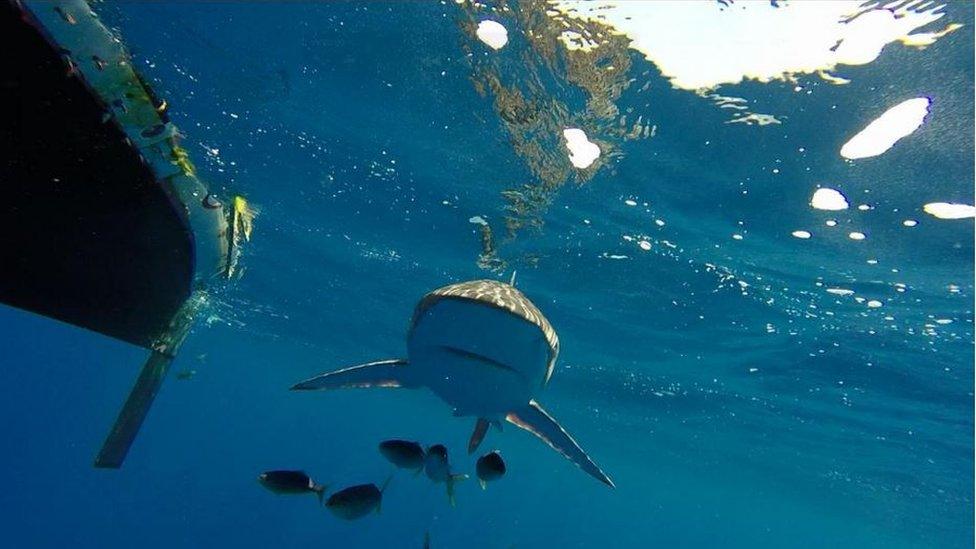
The crew saw humpback whales yards from their boat, pods of dolphins, schools of mahi-mahi dolphinfish, a sea snake, at least one albatross and two sharks they christened Eduardo and Fernando, which followed their boat.
They also dodged scores of flying fish, which would land on the boat before being picked up and thrown overboard again.
They were even dive-bombed by red-footed boobies (a type of seabird related to a gannet).
The oarswomen also spotted a few cargo ships, the odd passenger boat, a couple on a yacht and another ocean rower, John Beeden, who set his own record for a solo Pacific crossing just before the new year.
- Published25 January 2016
